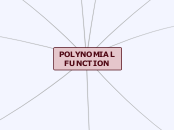jonka Loraine Flores 7 vuotta sitten
352
POLYNOMIAL FUNCTION
Determining the upper and lower bounds of a polynomial function involves using synthetic division to assess the behavior of real roots. The process entails dividing the polynomial by (

jonka Loraine Flores 7 vuotta sitten
352

Lisää tämän kaltaisia
NO TURNING POINT